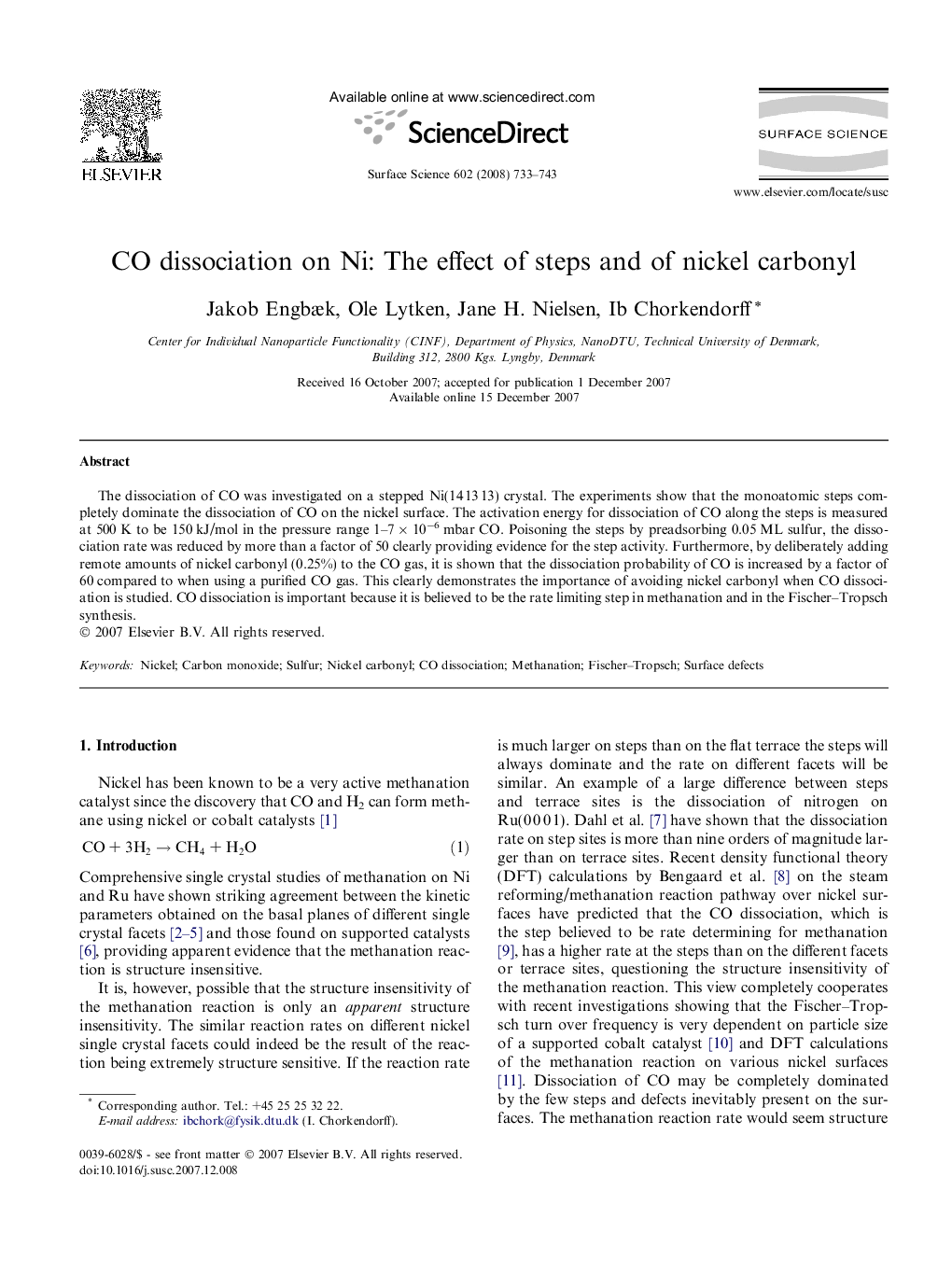| Article ID | Journal | Published Year | Pages | File Type |
|---|---|---|---|---|
| 5425447 | Surface Science | 2008 | 11 Pages |
Abstract
The dissociation of CO was investigated on a stepped Ni(14Â 13Â 13) crystal. The experiments show that the monoatomic steps completely dominate the dissociation of CO on the nickel surface. The activation energy for dissociation of CO along the steps is measured at 500Â K to be 150Â kJ/mol in the pressure range 1-7Â ÃÂ 10â6Â mbar CO. Poisoning the steps by preadsorbing 0.05Â ML sulfur, the dissociation rate was reduced by more than a factor of 50 clearly providing evidence for the step activity. Furthermore, by deliberately adding remote amounts of nickel carbonyl (0.25%) to the CO gas, it is shown that the dissociation probability of CO is increased by a factor of 60 compared to when using a purified CO gas. This clearly demonstrates the importance of avoiding nickel carbonyl when CO dissociation is studied. CO dissociation is important because it is believed to be the rate limiting step in methanation and in the Fischer-Tropsch synthesis.
Keywords
Related Topics
Physical Sciences and Engineering
Chemistry
Physical and Theoretical Chemistry
Authors
Jakob Engbæk, Ole Lytken, Jane H. Nielsen, Ib Chorkendorff,
